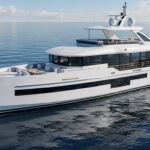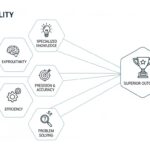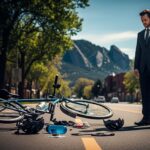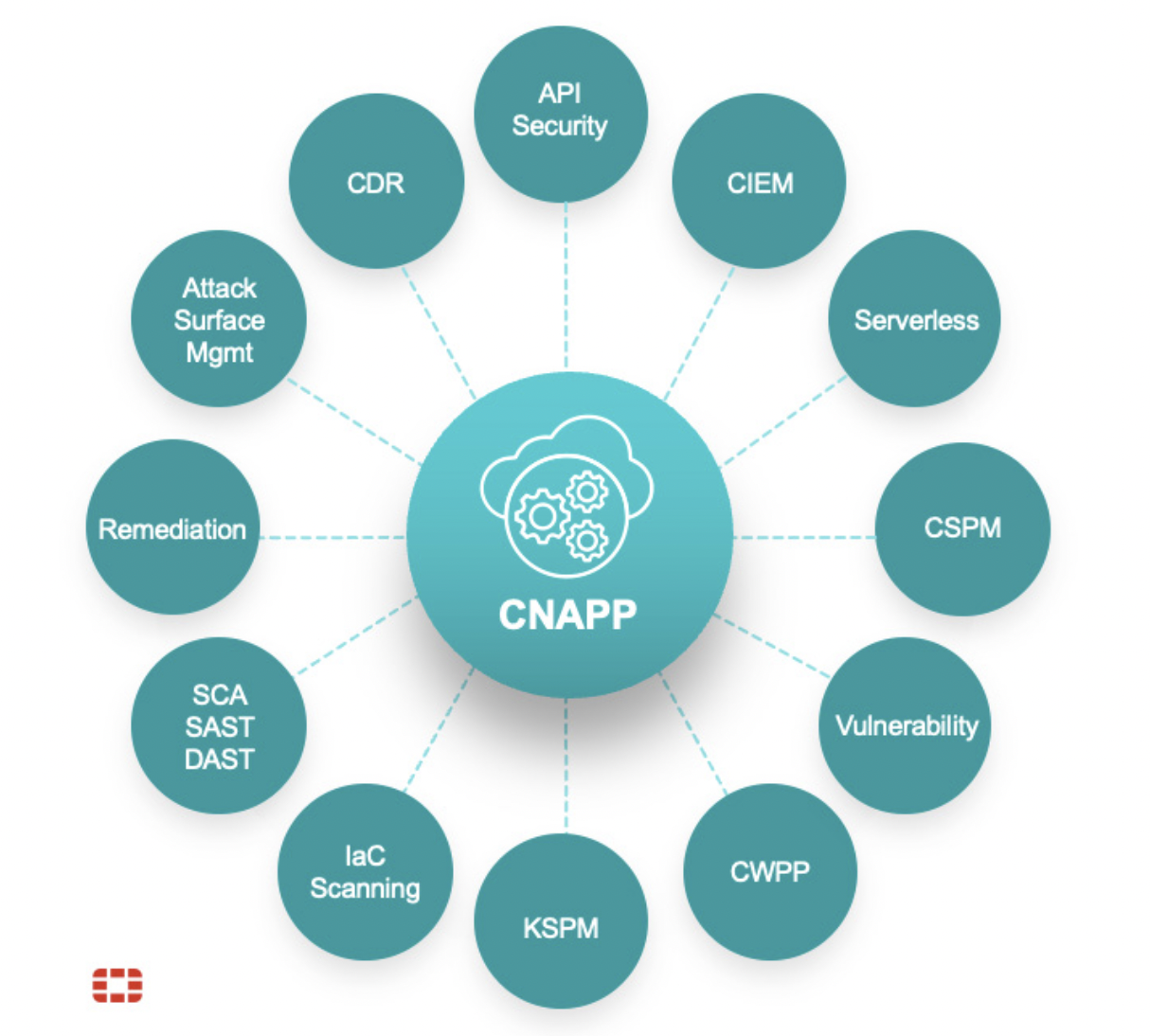The first time I met Yulia, I was still a student at UC Berkeley and Yulia was an artist in residency at the Headlands Center for the Arts. I remember touring her studio in admiration and wide-eyed wonder. She was living the artist journey that I dreamed of, so I picked up her business card on my way out the door. This card ended up in my business card stack: an unorganized pile I never throw out that I occasionally add to and revisit. Yulia’s card lingered at the bottom, for over two years.
I was sifting through the pile, looking for an artist who I wanted to talk to in our upcoming Venison issue, when I came upon hers. I revisited her site and as I scanned through her extensive CV I saw that she was one of the artists at Paseo Taos Interactive Arts Festival in 2014; an event I’m doing this year. Yulia is also a current resident at Pier 9, a residency program I was planning to apply to. She was carving an amazing art career, so I shot her an email, we met, talked, and I learned that this talented artist is a truly lovely person!
So how did you decide to pursue a career in art?
I studied ballet pretty rigorously from the age of 3 to 13. By the time I turned 13, I realized this wasn’t quite the right path for me, my heart just wasn’t in it anymore, so visual art was the next natural path for me, it was something I always enjoyed and was good at. So, while still in high school, I started taking art lessons at places like Parsons, & The School of Visual Arts. At that time, I wanted to be a designer because I thought that was the only job for creative people. It wasn’t until my junior year of high school when a fellow student told me she was majoring in Studio Art in college, this gave me agency to also study fine art. I moved to the Bay Area to attend CCA (then CCAC) as a sculpture major but spent time painting, making ceramic and learning about glass art while I was there.
But you didn’t graduate from CCA, tell me about your journey through higher education. What brought you to the schools you attended and what did you get out of your studies there?
I blindly accepted CCA, partly to get as far away from New York as possible. I was drawn to California, and CCA offered me a decent scholarship. About a year and half in, I realized it was just too expensive for me to be in a private school, paying Bay Area rent and needing to purchase a vehicle. It was just too hard on my parents and I was racking up major loans. So I decided to move back to New York. To appease my mother and avoid dropping out, I transferred to School of Visual Arts; where I ended up studying for one semester. But I wasn’t really happy there, so after Spring semester I took a year off, promising my mother, that I would return to school in 1 year.
That summer I applied to work as an au pair in Italy, which was a lovely way to go abroad for free. When I returned to NYC I worked for Unit Creative Management, a creative management agency representing commercial illustrators and photographers. While at Unit I learned about managing creative contracts, how to negotiate fee’s and timelines, usage rights and intellectual property. This gave me a good basis for dealing with clients as an artist, as well as some professional core.
The following fall I applied and enrolled at Rutgers University, the state university of New Jersey, I had two more years to complete my BFA and I wanted to do so without much debt. Rutgers also had a great art program, I’m grateful for my education there because their curriculum included classes that were not offered in art schools. I had to learn how to write coherent essays, how to make analytical arguments, and how to read scientific texts. This was difficult for me at first, because I realized there was so much that I didn’t know and still needed to learn. In the end, Rutgers gave me a well rounded education and helped me broaden my interests.
What was your life like after you left University? How did you find your style?
Right out of undergrad I worked at a couple commercial galleries and later for Christie’s auction house, so I was working for the commercial side of the art world. Being a young artist hungry for new opportunities it was a very intense environment to be in, and at times felt pretty disheartening, for example watching one painting sell for 72+ million USD. I realized that a lot of art becomes commodity and what sells is not always good and what is good does not always sell. I am glad I worked in the secondary market, because it made me reevaluate my own work through that lense. I decided to deliberately make work outside of the market, focusing on creating art experiences instead. This is around the time my work moved towards temporary installations with accessible, affordable materials as a way to take all that Christie’s money out of my head.
The other thing that was important at that time was asking myself “if I saw my work at a gallery or museum, would I even like it?” And much to my surprise the answer was no! This forced me to redefine my visual language and pay special attention to my own aesthetic preferences. I started a practice of visiting museums and galleries and allowing the work to speak to me, ignoring all the wall labels. Stopping only if a work of art really grabbed me. This helped me notice what I was naturally drawn to and ultimately helped me redefine my own aesthetic.
You have a lot of great opportunities on your CV, did you start applying to places straight out of college?
Well, I’m a big believer in not letting your failures get you down. There have been a lot of rejections that you don’t see on the CV. For every one yes, there have been at least 20 no’s. My success rate stats have gotten better as I’ve gotten older, but right out of college I applied to a bunch of residencies and got rejected from everyone I applied to. But instead of saying, “Ok, I’m not good enough”, I changed my strategy: “Let me not apply to the really intensive competitive residencies in NYC, instead I’ll apply to residencies in places I have never heard of, focusing on completing simple applications (no essay or letters of recommendations). I ended up getting accepted to the Wurlitzer foundation in Taos, New Mexico, which was really my ticket to getting out of NYC.
You seem to have received so many great grants and residencies in the Bay Area. What advice would you give other artists looking to apply to these programs?
Don’t be discouraged by the no’s. If you need to, go on and cry about it, grumble, get mad, but don’t let it keep you down for more than a day or two, do not let it keep you from being active. One thing I do to try to learn from my rejections, is re-read what I submitted. Then it becomes obvious why my application was rejected; more likely than not my proposal wasn’t clear or very succinct. The key to success is writing a clear and concise application. Using art jargon, bad grammar and low resolution images reflects poorly on you, it shows your granters that you are not paying attention to detail when others are.
The other thing to remember is that people who read your applications, are likely going through many of them in one day, they don’t have much time to spend on any one application. Your job is to get them interested in you immediately, put your strongest work first, focus your application and make sure your application and images look good. This goes without saying, but incase you don’t know, your images should be sharp, well lit and have good contrast. Your files should be cleanly presented, formatted and organized. Take the time to put your best foot forward.
Another tip I learned is to not fall into cliches. A lot of people apply to opportunities and say, ‘I want this opportunity because I am broke, I need the money and I need the space.’ Don’t write that even if it’s true, it’s bad form. Everyone wants money and space, it’s not a great reason. Grantors often look for why this opportunity is important for your development as an artist and your career at this time. Lastly, if you don’t get accepted to your dream opportunity, ask for feedback on your application and apply again. You never know why they picked who they did, sometimes it’s about group dynamic or maybe it’s the 7th time someone applied and this is finally their year! Do not feel that if they didn’t pick you, they will never pick you.
It’s an interesting topic, and there are two sides to every story. My take on it is, if you’re skeptical, be skeptical and trust your intuition. If you don’t feel like this is a good opportunity, don’t do it. I’ve said no to corporate projects because I didn’t like what their company stood for or how it presents itself in the public sphere.
My basic standards are to have creative freedom and reasonable funding. If I can’t get those things I’m not interested in the job.
Honestly, my experiences have ranged. I’ve had not so great experiences, better experiences and great experiences. I find the corporate + artist relationships work better when there is an art liaison in place, to bridge the “language” gap between artist and corporation, but at the end of the day, people are people. I don’t believe in the us versus them thing. I think there are many opportunities to dispel some of this anxiety around changes in the Bay Area. These opportunities have also showed me that all kinds of people work in tech, very interesting and very creative people that really appreciate artist and others who don’t know or care much for art. I think all this anxiety comes from lack of knowledge & fear of the other.
Facebook started their artist in residence program to bring in creative people to work in their corporate space, they focus on site specific work because part of the value their gain from the AIR’s is seeing artist working on site. Autodesk is a software company they make software for makers and high tech machines. Most of their users are engineers and ID designers who use the tools in a very specific way.
The people of Autodesk had the insight to recognize that artists often don’t do things by the book, they use software and tools in ways they weren’t designed for. This is a great way for Autodesk to test their products and machines. Looking for moments where their products don’t perform well or even fail. This feedback is used to make the products better. So the AiR’s are basically doing research and design testing for Autodesk, the stipend is significantly less when compared to the salaries of a tech employee, but the artists are thrilled because we get access to tools, we get paid well and we get all the materials we want towards our projects. In many ways it’s a win, win. The Autodesk AiR’s create content for Instructables.com, it’s a great give and take. So the AiR’s feel connected with the company and its staff, not just the office spaces they occupy.
Let’s talk about Paseo Taos! I have an installation attending this year, and you were one of their artists last year! Paseo wasn’t your first time to Taos, what brought you to the area the first time around?
The first art residency I did, which got me out of New York after school, was in Taos! I loved Taos, that place is magical. I’ve gone back to Taos many times since 2008. So that’s how I got involved with Paseo, some of the founders knew me and my work from the Wurlitzer Foundation. It was a really great experience and the event was a big undertaking for a small town like Taos.
What did you bring?
I brought a light sculpture I built at the Recology SF Artist Residency out of scavenged E-waste. It basically casted shadows on the wall that looked like shifting cityscapes.
What are the biggest themes that run through your work and how have you tied these into or utilized this information to finding the opportunities/residencies/grants that you have applied for over the years.
A lot of my work thinks about the psychology of space, and how architecture affects human behavior and thoughts. All the while, each work is unique and it varies in medium and execution. I enjoy creating installation work where art becomes experience. This innately routes me towards certain opportunities as an artist. Part of the reason why I do so many residencies is having time, space, and funding to make new work, often in a new environment. I like how residencies give me added challenges, it pushes me to not repeat the same methods or ideas.
I’ve just been exploring your website – portfolio and CV. In your portfolio, you transition between pure drawing installations, (A Desert Landscape for Paris) and more contemporary sculptural works (Working Towards Retirement) . In pieces like Silencing the Cacophony, and The Glory of a Tool is Seldom Judged by its Handle, I see there’s an overlapping between the two forms. Can you talk to me about the way in which you see these two forms of construction? Would you like them to always co-exist in a space or do you make them more as two separate conversations on the subject?
Great question, I wish I thought of it in a clear way so I could have a clear answer. I wanted to make things and learn about all aspects of materiality. I love the innate properties of things and how we could use them. In painting and drawing you don’t have to deal with physics in the same way sculpture does! One of the big reasons I went to grad school, was because I wanted to move my work off the wall. So I am still pulling things off the wall, and getting comfortable with making 3D things. In my perfect world, my work would be a total installation, drawing, sculpture, architecture.
Your work whilst staying thematically consistent, explores both form and construction. Can you talk to me about the way in which you continue to push your work into new directions? Is this more an adaptation to space and/or what other challenges have you given yourself over the years? (in order to improve/ push your work forward)
It’s not always conscious, but I tend to be most interested in new things, skills and materials. Perhaps I just want to be a perpetual student. Once I learn a tool/technique very well, I stop exploring because I can anticipate the results which takes all the guess work out of it. Working with unpredictable materials or in a new space, results in accidental discoveries and creating things I didn’t expect, so for me working in new environments keeps things exciting.
OK, Now I have to know more about Autodesk, where we are now! When did you apply?
Around February, but it was a really long wait, until about May. I did a lot of homework before applying. I talked to people I knew who were residents before me, I did a tour read a bunch of Instructables, etc. This really goes for any place I apply to, I try to do my homework and reach out for an informal chat, usually people are really generous. Don’t underestimate who you talk to and what they might know about the opportunity. At least take a tour to get a feel for the place and decide if you can see yourself working there.
What project are you working on here? What machinery are you learning?
I’ve basically trained on every machine they offer. I’m very excited to work on the CNCs, this access is very privy and rare. I have a lot of ideas for projects, but it is hard to narrow down.
I’ve been thinking of how to make 2D paintings with 3D printers and how to make 3D objects with 2D stock, creating sculptures about tension.
There’s just a huge amount of information, so it takes a while to learn it all, but once you do it is very empowering.
What advice would you give someone who is interested in applying?
Write a fantastic Instructable with great images! What else? Well, show them you can pull off big projects and finish them by deadlines. Make sure you’re open minded and ready to learn. And prepare yourself for the environment. Pier 9 is active, loud and can be overwhelming, consider how will you focus in this environment?










